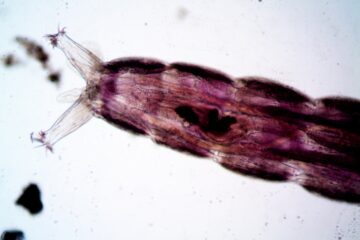![]()
Introduction
Dogs have been used in law enforcement since the 5th century. Certain dogs are known for their loyalty toward their owners and their protecting nature. Some breeds of dogs are known for picking up scents and helping the police in their operations. They can sniff bombs, drugs, and chemicals or track down criminals with their scents, etc. With proper guidance and training, these police dogs can aid law enforcement agencies.
What is K-9?
The term ‘K9’ or ‘K-9’ is derived from the English and French word ‘CANINE’ (which simply means ‘DOG’). ‘CA’=’K’ and ‘NINE’=’9’. The first use of ‘K-9’ goes probably back to 1942. In that year the first military K-9 Corps was created by US Secretary of War Robert P. Patterson. Later in 1959 the wordmark ‘K-9’ has been registered as federal symbol in the USA Trademark Office by the US Army. Since than the terms K-9 or K9 became commonly used for dogs in general, service dogs and working dogs.[1]
There are two common classifications of police K-9s:
- Patrol: These dogs are used to provide patrol duties (officer protection, suspect apprehension, area or building clearance, and security in sensitive or controlled areas.
- Detection: These dogs are used to find either narcotics OR explosives. it is either one or the other.[2]
The Role of a Police Dog
- Tracking or Search and Rescue: The police dogs who specialize in finding missing persons or criminal using their scent and the techniques developed in training fall under this category. They are used to locate a suspect or find missing objects or persons. The dogs used for this work usually have a powerful sense of smell.
- Substance Detection: These police dogs also use their sense of smell to help police, but in a different way from tracking dogs. Substance dogs focus on detecting a specific substance. Some dogs specialize in recognizing bombs or explosives. These dogs help save officers from having to slowly search by hand through luggage or a car or other areas by quickly determining if an illegal substance is near. They can also sniff out the person if he is carrying any explosives or if they have recently handled explosives.
- Cadaver Dogs: These dogs are trained to locate dead bodies. They use their sense of smell to locate the dead bodies. They help law enforcement officers/ police by detecting the odour of dead bodies. [3]
- Arson: Dogs are trained to pick up scents or traces of materials at the site of suspected arson. Dogs trained in this particular discipline do not detect arson but detect ignitable liquids that can be used to commit arson. Since they are usually deployed after a fire, the dogs have to be particularly hardy, and they have to be able to work at distances from the handler when the remains of buildings are structurally unsound.[4]
- Assault Dogs: Assault dogs can be used to storm rooms or houses in which an aggressor is hiding. They will indicate where the aggressor is hiding and will even attack a gunman and will latch on until the order of release will be given by its handler. In the Army, dogs are fitted with cameras so that the handler can get live footage of what is happening and can give instruction to the dog accordingly. In Gujarat Police Force, assault dogs are deployed with the Chetak Commando units. They can be helpful to police in crowd control works.[5] ..
Training
Each handler is associated with a dog. The training will occur in the presence of the handler only. Right from the induction till the retirement of the dog, both the dog and the handler shall always work together. The training of the dog always goes with the handler. The training is supposed to be conducted in a playful manner and on a work and reward basis only. CCC (Customs K9 centers) are the only agency responsible for annual fresher training. The Customs working dog will be trained in a playful manner in crowded places also. It should be ensured that the training, deployment, and operation are sensed as game/play to the dogs. This will lead to better results in the actual scenario. Sometimes in a stressful environment, the dogs cannot perform their duty properly. So if due to lack of detection the handlers are under stress, the same should not be passed on to them. The handler and the dog should have love and affection towards each other and should also work with the same spirit.[6]
A member of the Home Ministry had stated that Police Dogs that are part of Canine squads of central paramilitary forces will be evaluated based on the K9 proficiency evaluation test. This test has been developed by the home ministry in line with global standards. Whereas the K9 behavior assessment test will assess the young dogs on the detection and patrol work.[7]
The Police K9 cell, which was established within the MHA in 2019, plans to streamline the breeding, training, and selection of dogs. It has set up a proficiency cell to implement a new set of behaviour assessment tests, what it calls the ‘Augmentation of K9s by Licensing as per Accreditation Norms’ (AKLAN). These tests will assess the proficiency of pups for police and paramilitary roles. Earlier, there was no model of assessment and only random audits were carried out.[8]
K9 Behaviour Assessment test (BAT) consists of 12 sub-tests that evaluate the behaviour/reaction of a dog before his specialized training, on counts such as affability, handling, leash, retrieving, the reaction on an unstable table, search, metal stair, visual startle, gradual visual startle, acoustic startle, dark room reaction, and gunshot reaction. “A confident dog displays less or no reaction to these sub-tests. Based on results, one can determine if the dog is suited to and has a natural flair for detection or patrol work or both.[9]
Breeds Suitable as Police Dogs
Some of the common dog breeds that are used in most countries are mentioned below:
- German Shepherd: Originating in Germany, the German Shepherd is a medium to large-sized dog. German Shepherds are usually herding dogs, developed originally to herd sheep. Because of their intelligence and quick learning skills, they are now preferred for several jobs around the world, including assisting the disabled, search and rescue, and police and military roles.[10]
- Belgian Malinois: They are the second most popular police dog breed. They are known for their quick reaction time and are not aggressive like the German Shepherd. They have a protective and loyal personality. They are used to catch criminals and also to sniff out narcotics and bombs. They have good listening and attention skills.
- Labrador Retriever: They were initially used to sniff out the game and retrieve it. But now they are used in K9 units as well. They are most commonly seen in airports. They are known for their friendly and social nature. The working dogs are more muscular and lean as compared to the household dogs. They are also used to detect narcotic substances.[11]
- Rajapalayam Dog: They are one of the popular dog breeds from India. Although they aren’t used as much nowadays, they are popular among the Indian police force. These dogs are large and powerful and are also loyal.
- Doberman Pinscher: It is a large muscular dog with a slim frame and cropped ears. They are known as loyal and obedient. They are also among the intelligent dog breeds which makes them highly useful in police work.
- Bloodhound: This dog breed is used in law enforcement to detect narcotic substances and to search and rescue people. They are known for their strong sense of smell. They have a powerful sense of catching a scent over a long distance. This makes them unique from other dog breeds.[12]
Conclusion
Police dogs prove to be very useful in investigations and much other work for the police. Other works like the detection of narcotics or some illegal substance, detection of bombs, catching a criminal or locating a dead body. Police dogs due to their powerful sense of smell make the work of officers easier and less cumbersome. These dogs undergo training and assessment before being able to work on missions. The pups who are around 12 to 18 months are preferred for such roles. Also, the physical fitness of the dog is taken into consideration. The dogs are imparted training keeping in mind the features of their breed.
References:
[1] The truth about K9 and K-9, MCRS, https://www.mcrs-magnetball.be/c-3772738/the-truth-about-k-9/#:~:text=The%20term%20’K9’%20or%20′,Secretary%20of%20War%20Robert%20P.
[2] About K9s, NATIONAL POLICE DOG FOUNDATION, https://www.nationalpolicedogfoundation.org/about-k9s.
[3] What’s the role of a police dog?, ITV NEWS (Dec. 13, 2012), https://www.itv.com/news/central/2012-12-13/gv.
[4] Col (Dr) PK Chug, K9, 1 NATIONAL POLICE JOURNAL 13, 31 (2020).
[5] K9 Squad gets more teeth, THE TIMES OF INDIA ( Mar. 28, 2021), https://timesofindia.indiatimes.com/city/ahmedabad/k9-squad-gets-more-teeth/articleshow/81728830.cms.
[6] India Customs K9 Manual, CENTRAL BOARD OF EXCISE AND CUSTOMS, https://www.cbic.gov.in/resources//htdocs-cbec/deptt_offcr/INDIAN%20CUSTOMS%20K9%20MANUAL.pdf;jsessionid=9DE472D9739F5A7DADF27EC57F71F0B6.
[7] Bharti Jain, For promotion, police dogs will have to take k9 test, THE TIMES OF INDIA ( Feb. 25, 2021), https://timesofindia.indiatimes.com/india/for-promotion-police-dogs-will-have-to-take-k9-test/articleshow/81200837.cms.
[8] Dr. Rajesh Singh, K9 Proficiency Evaluation test, (Apr. 16, 2022), https://timesofindia.indiatimes.com/india/for-promotion-police-dogs-will-have-to-take-k9-test/articleshow/81200837.cms.
[9] Supra note 7.
[10] Anwesha Tripathi, 7 Exceptionally skilled dog breeds used by the Indian Army, SCROLLDROLL (Oct. 25, 2021), https://www.scrolldroll.com/dog-breeds-used-by-the-indian-army/.
[11] Patrick Lumontod, 15 Most popular police dog breeds, (Jul 9, 2021).
[12] The Guide to Law Enforcement Dogs, THE SMART CANINE, https://thesmartcanine.com/police-dog-breeds/.



0 Comments